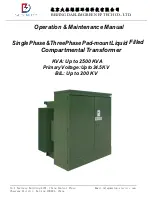
CC2500
SWRS040C
Page 23 of 89
configuration should only be updated when the
chip is in this state. The RX state will be active
when the chip is in receive mode. Likewise, TX
is active when the chip is transmitting.
The last four bits (3:0) in the status byte
contains
For read
operations (the R/W bit in the header byte is
set to 1), the
field
contains the number of bytes available for
reading
from
the
RX
FIFO.
For
write
operations (the R/W bit in the header byte is
set to 0), the
field
contains the number of bytes that can be
written
to
the
TX
FIFO.
When
=15, 15 or more
bytes are available/free.
Table 17 gives a status byte summary.
Bits
Name
Description
7
CHIP_RDYn
Stays high until power and crystal have stabilized. Should always be low when using
the SPI interface.
6:4
STATE[2:0]
Indicates the current main state machine mode
Value
State
Description
000
IDLE
Idle state
(Also reported for some transitional states
instead of SETTLING or CALIBRATE)
001
RX
Receive mode
010
TX
Transmit mode
011
FSTXON
Frequency synthesizer is on, ready to start
transmitting
100
CALIBRATE
Frequency synthesizer calibration is running
101
SETTLING
PLL is settling
110
RXFIFO_OVERFLOW
RX FIFO has overflowed. Read out any
useful data, then flush the FIFO with
SFRX
111
TXFIFO_UNDERFLOW
TX FIFO has underflowed. Acknowledge with
SFTX
3:0
FIFO_BYTES_AVAILABLE[3:0]
The number of bytes available in the RX FIFO or free bytes in the TX FIFO
Table 17: Status Byte Summary
10.2
Register Access
The configuration registers of the
CC2500
are
located on SPI addresses from 0x00 to 0x2E.
Table 35 on page 58 lists all configuration
registers. It is highly recommended to use
SmartRF
®
Studio [5] to generate optimum
register settings. The detailed description of
each register is found in Section 32.1, starting
on page 61. All configuration registers can be
both written to and read. The R/W bit controls
if the register should be written to or read.
When writing to registers, the status byte is
sent on the
SO
pin each time a header byte or
data byte is transmitted on the
SI
pin. When
reading from registers, the status byte is sent
on the
SO
pin each time a header byte is
transmitted on the
SI
pin.
Registers with consecutive addresses can be
accessed in an efficient way by setting the
burst bit (B) in the header byte. The address
bits
(A
5
– A
0
) set the start address in an
internal address counter. This counter is
incremented by one each new byte (every 8
clock pulses). The burst access is either a
read or a write access and must be terminated
by setting
CSn
high.
For register addresses in the range 0x30-
0x3D, the burst bit is used to select between
status registers, burst bit is one, and command
strobes, burst bit is zero (see Section 10.4
below). Because of this, burst access is not
available for status registers and they must be
accessed one at a time. The status registers
can only be read.
10.3
SPI Read
When reading register fields over the SPI
interface while the register fields are updated
Summary of Contents for CC2500
Page 91: ...PACKAGE OPTION ADDENDUM www ti com 6 Feb 2020 Addendum Page 2 ...
Page 94: ......
Page 95: ......
















































